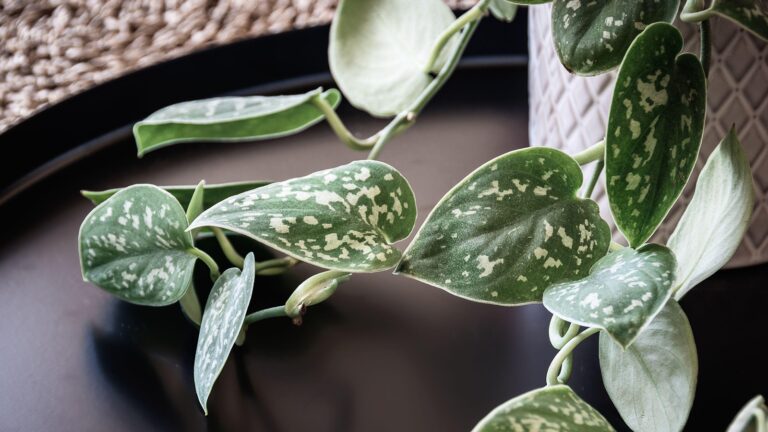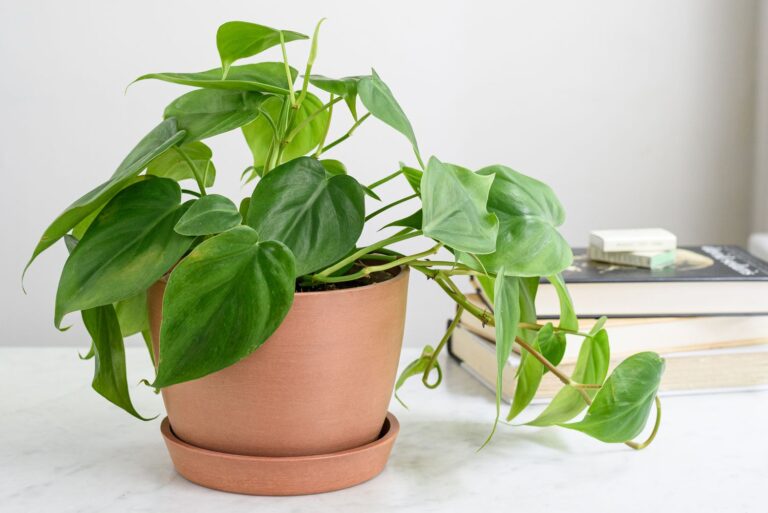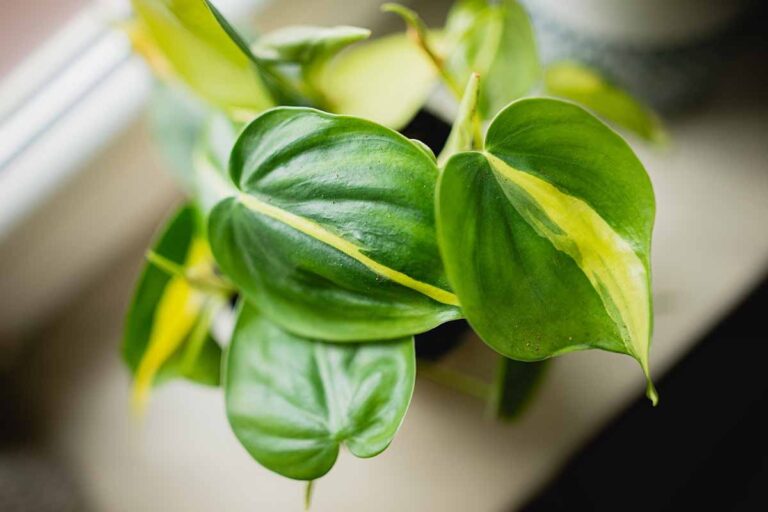Philodendron Watering Mastery: Complete Guide to Perfect Hydration
You can’t handle yellowing leaves and mushy stems? Here’s the watering system that transforms plants with the lowest resistance to suffering disease into thriving plants — no more guessing, no more root rot.
The Science of Philodendron Hydration
Philodendrons evolved in tropical rainforests during the alternating periods of heavy rain and moderate dry. That natural cycle gave birth to their unique water management system: roots that suck up moisture without any delay, and that need oxygen between rain seasons. Knowing this biological foundation can account for why the advice to keep soil always moist is destroying these plants.
The solution is its specialized root structure. Aerial roots have velamen — sprouts of spongy tissue that serve as botanical paper towels — that rapidly absorb water when there’s water, then permit gas exchange when it’s dry. Underground roots form fine hairs that suck moisture from well-aerated soil. As soil becomes waterlogged, these delicate structures choke and suffocate in the cascading decline that most plant owners would recognize too late.
Mastering Moisture Measurement Techniques
Well-measured moisture does differentiate successful philodendron cultivation from persistent plant replacement. The finger test is still a proven and reliable test of the ability to take a sample, however, if technique is poor then finger testing would not be suitable and you need to improve your technique as you progress. Place your index finger to the second knuckle and feel for moisture at the depth of the root zone. It works well for pots of 6-8 inches, but is completely unfeasible with larger pots.
When used properly, moisture meters give objective readings. Place the probe at the halfway point between the edge of the pot and the stem of plant with minimum contact with the roots. Clean and wash probes between use so as to avoid contamination and inaccurate reading. Quality meters measure moisture levels using a 1-10 scale, so philodendrons only need watering when reading a scale of 3-4, or between 50 and 70% dryness.
They are advanced and they have a weight method designed for weighing pots to determine moisture content. A properly watered 6-inch pot weighs approx 2.5-3 pounds, but drops to 1.5-2 pounds when it is ready to be watered. This process takes practice but is done without soil change and gives uniformity from one pot with different sizes to the next.
Water Quality: The Unseen Growth Factor
Philodendrons are extremely sensitive to water chemistry and yet little attention is paid to this important consideration in clinical management. Water from the tap that contains chlorine, chloramines, fluoride or high mineral levels slowly injures fragile root systems. Symptoms emerge slowly–leaf margins turned brown, growth diminished, new leaves tiny even with full light and nutrition.
Filtered water removes the toxic compounds that do not biodegrade while allowing harmless minerals to go through. Reverse osmosis systems provide the purest option, but remineralization is essential for plant health. Basic carbon filters, on the other hand, can filter chlorine and heavy metals away, but save calcium and magnesium in cells that are necessary for life.
Water temperature makes a major contribution to root function. While the cold shocks roots from one point into another in a negative time zone resulting temporary cessation of water absorption and stresses plants. At room temperature, 65-75 °F water will allow the plant to conduct maximal metabolic reaction and reduce heat shocked process. In the winter months, give water a night sittime to rest before applying.
pH values ranging from 4.5-6.0 enhance the Nutrient Availability for Philodendrons. The majority of municipal water is 7.0-8.5 and this condition contributes to nutrient lockout that is similar to deficiency but with sufficient fertilization. Simple pH testing kits for adjustment uses natural acidifiers such as white vinegar — 1 teaspoon per gallon reduces pH by about 0.5 units.
Seasonal Watering Science
With a basic understanding of philodendron growth cycles, you won’t get the muddle up around seasonal watering changes. These species, in fact, behave differently to light, temperature, and hormonal factors that dictate when they need water.
Spring Active Growth
In spring active growth begins with increasing daylight that prompts auxin production. Metabolic rates increase and they need to be watered more often: the frequency is 5 to 7 days (for established plants). New leaf production requires constant moisture, but between waterings soil should still be 50% dry to maintain plant health.
Summer Peak Growth
Philodendrons are at their peak of growth and photosynthesis by the summer time, when they are the most active. Higher temperatures increase transpiration (meaning more water is required to be supplied every 4-6 days) and they need more and more rain throughout the year. But air conditioning creates artificial conditions in which soil stays damp for longer—when is it appropriate to adjust the timing according to actual soil conditions, not on a schedule and make your calendar coincide.
Autumn Transition
Autumn also prompts gradually setting the stage for dormancy – because the light is down. Eventually, the water requirements drop as daylight decreases, which is 7-10 days. This transition phase is key — by prolonging summer watering times root rot is almost a certainty since the rate of growth slows and the soil remains flooded.
Winter Dormancy
Winter dormancy saves us a lot of water. Metabolic rate drops 60-80% and some varieties grow very little for 8-12 weeks. Soil may require 10-14 days to reach appropriate dryness levels. When it is too much water is also watered during such time, root damage is widespread and causes spring decline on the heels of good care with the earth from years of care and over watering for far more extensive damage.
Bottom Watering Vs Top Watering: The Complete Guide
Philodendron fanatics face an ongoing debate on to what the alternative is, bottom watering or top watering. Both of them offer benefits different aspects of plant, soil and surface conditions.
Bottom Watering Benefits
Bottom watering uses capillary action to pull water upward through drainage holes to maintain total saturation of soil without compaction of the surface. It’s great for badly drying out plant that would otherwise be lost through gaps and not receive it evenly. Roots build up more durable systems as they progress toward the moisture source, developing more resistant plants.
The method involves placing pots in water-filled containers and allowing them to soak up a volume of water for about 15-20 minutes while the soil gets wet. Removing plants early avoids overwhelming saturation and provides sufficient drainage before going back to decorative containers. Bottom watering is of particular benefit for propagation transitions because immature root systems receive sufficient moisture to maintain optimal growth without disturbance.
Top Watering Benefits
Top watering eliminates the accumulated salts and minerals that bottom watering cannot, and also produces important flushing of the soil. Monthly, top-level watering with clean water eliminates nutrient build up which over a period, gradually damages root communities. This method also provides immediate visual feedback to assess soil drainage—water should flow out of drainage holes within 30-60 seconds upon start of application.
The Optimal Solution
The solution is therefore a mixture of the above two techniques: first, bottom watering for regular water supply, and second, monthly top watering for soil maintenance. It allows for the growth of roots without building up mineralization, which impairs long-term plant health.
Transition Approach to Water Propagation
The successful semination of philodendron cuttings from water to soil is the most-important procedure for propagation, with failure rates greater than 70% if poor. This transition shock is because the water-stressed roots that form watery roots aren’t sufficiently protected from soil habitat.
Preparation Phase
Start transition preparation 7-10 days ahead of soil planting by reducing water levels gradually. This creates pressures on roots to acclimatize and the protective epidermal layer needed to endure, and be protected against climate exposure. The roots will migrate from a white to a light-colored tone, indicating that structural change is taking place to prevent desiccation.
Soil Preparation
Soil preparation should focus equally on moisture absorption and aeration. Using 40 percent peat moss, 30 percent perlite, and 30 percent orchid bark, mix those together to keep the roots moist and get the oxygen the water roots need for adaptation. Ordinary potting soil proves too dense, causing immediate root suffocation.
Planting Process
Plant cuttings when soil moisture reaches 60 percent capacity — moist but not saturated. This kind of moisture level enables root desiccation prevention while avoiding the saturated conditions that cause rot. Let this moisture level keep it at this steady state for an ongoing period of 2-3 weeks while roots make soil-adapted structures.
Recovery Protocols for Overwatering
The recovery of philodendron from overwatering must therefore be performed immediately to avoid cascading root system collapse. Early intervention determines plant recovery, or if the plant starts to decline little by little despite corrective action.
Immediate Action Steps
Eject all plants from the pots immediately if overwatering is suspected – not moving around root damage for around 24 hours will result in much worse root damage. Expose root systems lightly to air, removing any saturated soil that blocks access to oxygen. This is most commonly accomplished for 2-4 hours to significantly reduce moisture while maintaining root hydration.
Root Assessment
Evaluate root health in detail, looking for healthy white/tan roots and damaged brown/black sections. Healthy roots are firm with root hairs visible; damaged ones appear mushy and easily detach themselves. Slice up compromised roots with sterile scissors, cutting 1/4 inch into healthy tissue to remove all diseased material.
Recovery Timeline
Soil volume and moisture storage during recovery will be decreased by placing pots 1-2 inches smaller than old ones. The recovery period depends on damage intensity. At times it is particularly difficult for damaged areas to be rejuvenated, particularly if damage is severe. Plants with 25% root loss usually recover within 4 to 6 weeks, while severe cases which require 50% or greater root removal will require 8 to 12 weeks for substantial new growth. The water must be of constant environmental conditions during recovery, meaning that not being exposed to such fluctuations of temperature or light stress becomes too challenging.
Advanced Moisture Monitoring Systems
The more advanced technology-driven monitoring systems that are being employed by philodendron enthusiasts are cutting guesswork out with the precision you get from technology based monitoring and environmental information. These devices are especially useful for large volumes of specimens or high-value materials where watering mistakes can be expensive.
Smartphone-Connected Sensors
Smartphone apps enable digital moisture sensors to track plant moisture across the system for readings, alerting owners when specific plants need to be cared for. Good sensors assess moisture at several soil depths, temperatures and intensities and light conditions— yielding detailed environmental profiles to optimise care timing. They cost $25-40 per unit, but can boast of years of reliable service in the hands of serious growers.
Weight-Based Monitoring
Monitoring based on weight are systems for weight-based tools which utilize a precision scale integrated with data logging systems. These systems monitor small weight fluctuations in step with minute differences in weight with moisture loss, producing predictive models in advance to predict watering demand that predict watering requirements hours or days before watering, in advance of watering. The commercial systems are $150 to $300 but offer the same level of laboratory-based precision and performance to serve research purposes.
Environmental Monitoring Stations
Tracking environmental monitoring stations incorporate temperature, humidity, light and soil moisture information to form a comprehensive profile of the growing state of your plant. Such systems will identify linkages between environmental conditions and the responses of the plants so that care can be taken in a proactive approach to avoid the occurrence of stress symptoms. Weather station integration is also possible to autonomously calibrate treatment plans to forecastable environmental conditions.
Compatibility with Fertilization Schedules
Concerned parties in the process, watering and fertilization system have an interdependent relationship, with each input determining the effectiveness of the other. Knowledge of these relationships optimizes nutrient and water productivity, and can help mitigate the problems frequently associated with individually treating these elements.
Water Quality and Fertilizer Performance
Water quality influences the performance of fertilizer directly — hard water containing calcium and magnesium triggers chemical reactions that lock out phosphorus and iron and produce deficiency symptoms, despite that fertilization is sufficient. Water hardness testing allows for suitable fertilizer or water treatment to guarantee nutrient availability.
Temperature Effects
Temperature affect rates of water and nutrient absorption. More metabolic activity necessitates more frequent watering AND fertilization under warm summer conditions. But a more frequent watering rate would result in more rapid soil nutrient dilution, which means a heavier yet lighter application for fertilizer is required. Winter dormancy cuts off all the water and nutrients fairly evenly.
pH and Nutrient Availability
Nutrient solubility and availability is a product of pH settings. Micronutrient availability is achieved when the Philodendrons are in the optimum range (4.5- 6.0), as well as prevents any toxic accumulation. Water pH outside this interval necessitates adjusting or special fertilizer formulations that remain available despite pH difficulties.
Salt Flushing Protocol
Annual salt accumulation in fertilizers involves a thorough flushing system which requires more than a standard 20-30% of the soil holding capacity to be filled with the fertilizer. This procedure eliminates salt but supplies the roots with fresh water which enables optimal root function. You avoid the slow accumulation of toxicity over the year, resulting in an enigmatic decline in otherwise well-tended plants, with frequent monthly flushing.
Key Sources:
Philodendron Watering – The Ultimate Guide | Intuitive Plants
How Often to Water Philodendrons for the Lushest Houseplants | The Spruce
Bottom Watering Plants: Benefits and How-To Guide | The Spruce
How to Fix Overwatering and Root Rot on Houseplants | Costa Farms
Philodendron Care Guide | Bloomscape
Water Quality for Houseplants: Tap vs Filtered vs Distilled | Real Simple







